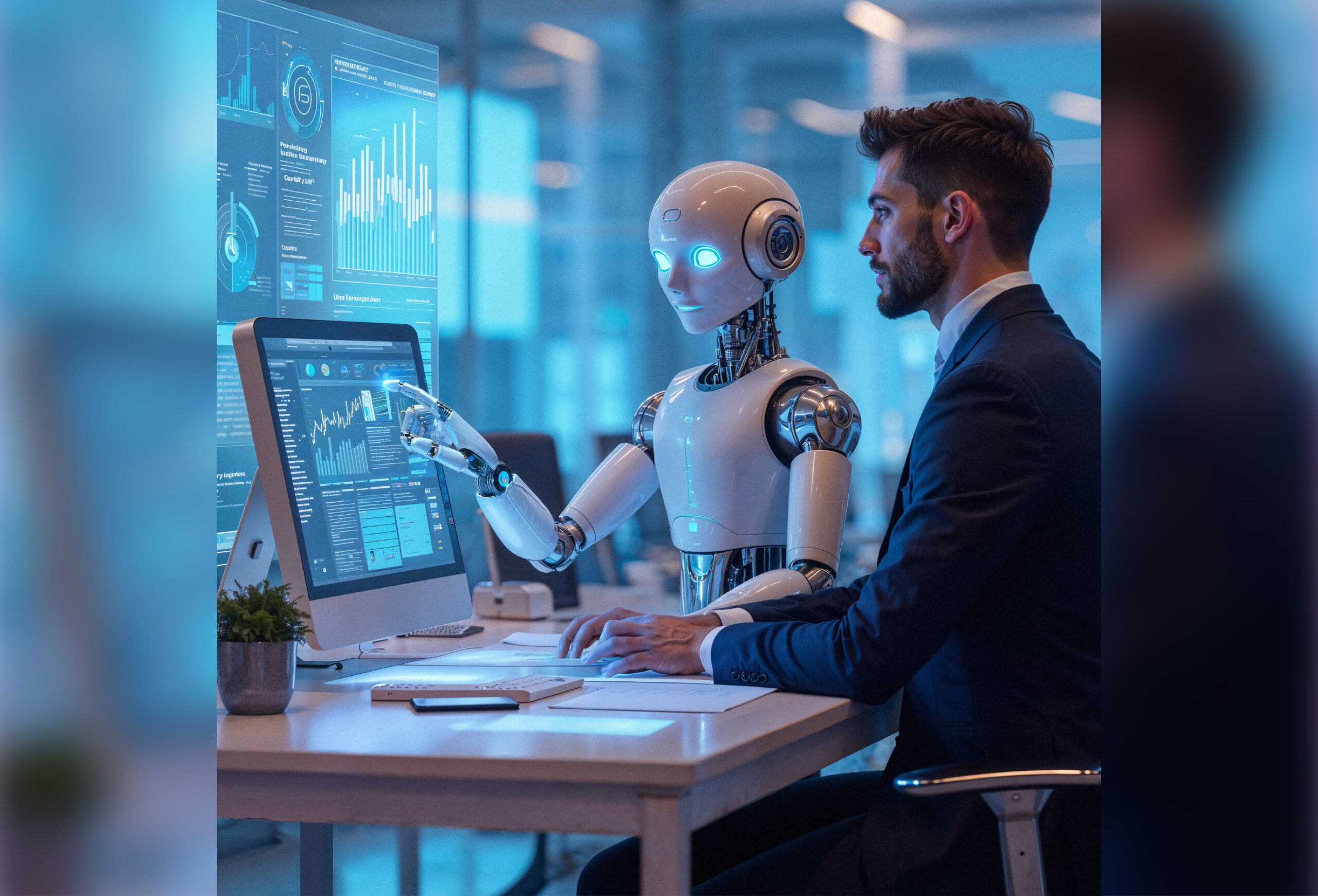In today’s high-stakes business landscape, agility isn’t just a competitive advantage—it’s survival. As markets shift faster than ever and expectations for speed, personalization, and efficiency soar, businesses are under pressure to do more with less. The answer, increasingly, lies in the powerful intersection of Artificial Intelligence (AI) and Automation.
While both technologies have made significant individual impacts over the past decade, their convergence is quietly rewriting the rules of scalability, transforming lean operations from buzzwords into real-world operating systems.
Beyond Efficiency: Toward Intelligent Autonomy
Traditional automation has long focused on reducing manual effort—think robotic process automation (RPA) in finance, chatbots in customer service, or conveyor systems in manufacturing. These tools execute predefined tasks with high speed and consistency but lack adaptability.
AI, on the other hand, adds intelligence, context, and decision-making to automation. When AI is layered onto automated systems, machines can not only execute tasks but also analyze situations, learn from data, and make informed decisions in real time. This evolution marks the shift from rule-based workflows to intelligent automation—a leap that unlocks radical operational scalability.
For example, consider invoice processing: an automated system can extract values and push data into a finance system. But add AI, and now it can detect anomalies, predict approval delays, and flag potential fraud—reducing human intervention by 70-90% while increasing accuracy and speed.
How AI x Automation Powers Lean Growth
- Scalability Without Bloat
Traditional growth often requires proportionate increases in headcount and infrastructure. But AI-driven automation flips that logic. With the right systems in place, businesses can serve ten times the customers with the same or fewer resources. AI identifies bottlenecks, forecasts needs, and reallocates resources before slowdowns occur. - Decision-Making at Machine Speed
In fast-moving industries like logistics, fintech, or e-commerce, delays in decision-making can cost millions. AI-enabled automation allows systems to analyze data and act within milliseconds—adjusting inventory, re-routing shipments, flagging risky transactions—all without human delays. - Personalization at Scale
In marketing and customer service, automation ensures consistency; AI ensures relevance. Together, they enable hyper-personalized engagement with each customer—automated email campaigns driven by predictive analytics, real-time chatbot responses tailored to tone and behavior, and dynamic product recommendations based on context, not just history. - Continuous Optimization
AI doesn’t just run processes—it learns from them. Intelligent automation allows systems to get better over time, identifying what works, what doesn’t, and where improvements can be made. This enables businesses to iterate operations in real-time, rather than waiting for quarterly reviews.
Industry Examples of AI-Driven Lean Models
- Retail & E-commerce: Companies like Amazon have long leveraged AI + automation for demand forecasting, dynamic pricing, and warehouse robotics. But even mid-sized retailers are now using tools like automated return handling powered by computer vision and AI to reduce costs and improve experience.
- Healthcare: AI is automating triage, claim approvals, and appointment scheduling, while also aiding diagnostics. This reduces administrative burden and allows lean medical teams to focus on high-value, human-centered care.
- Manufacturing: Predictive maintenance systems use sensor data to forecast equipment failures before they happen, reducing downtime and saving millions in avoidable losses.
- B2B Services: SaaS platforms are integrating intelligent workflows—from contract analysis to onboarding sequences—cutting customer acquisition and service delivery timelines in half.
The Strategic Shift: From Labor to Leverage
The most forward-thinking businesses are no longer asking, “How many people do we need to get this done?” Instead, they ask, “How can AI and automation extend our team’s capacity?”
This mindset doesn’t eliminate human labor—it elevates it. With AI handling routine, repetitive, or reactive tasks, human workers are freed to focus on strategy, empathy, creativity, and innovation.
For startups, this translates to leaner launch teams and faster go-to-market strategies. For enterprises, it means reduced overhead and increased agility, even at massive scale. In both cases, AI + automation becomes not just a tool, but a force multiplier.
Building an AI-Automation Stack
Adopting this model doesn’t mean throwing out existing systems—it means rethinking them through an intelligent lens. Companies leading this shift are:
- Auditing workflows to identify high-volume, low-value tasks for automation
- Training models on domain-specific data to ensure relevance and accuracy
- Integrating orchestration tools that allow AI and automation components to work cohesively
- Prioritizing data hygiene, security, and governance to ensure scalable trust
- Empowering teams to work alongside automation—not against it—through upskilling and role evolution
Challenges and Cautions
Of course, intelligent automation isn’t without friction. Challenges include:
- Resistance to change, especially from teams fearing job loss
- Ethical concerns around AI decision-making without human oversight
- Data quality issues that can compromise AI accuracy
- Over-automation, where human nuance is needed but missing
These can be mitigated with thoughtful change management, transparency, human-in-the-loop design, and a clear ethical framework.
The New Operating Model
AI x Automation is not just a toolkit—it’s a blueprint for a new kind of business. One where scale doesn’t mean complexity, growth doesn’t mean bloat, and speed doesn’t mean sacrifice.
As we look toward the future, it’s clear that businesses who can blend intelligence with automation—who can build lean systems that learn and adapt—will be the ones that lead. Not just because they’re faster or cheaper, but because they’re smarter by design.
Read Also: The Shift from AI Hype to AI Infrastructure: What’s Powering the Next Wave?



